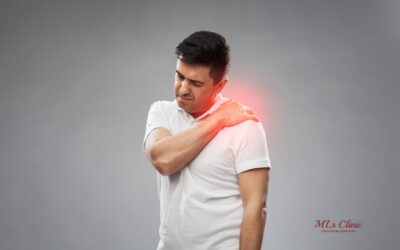The Truth About Hip Dysplasia in Adults: Symptoms, Causes and Treatment Options

What is Hip Dysplasia?
Hip Dysplasia is a condition more commonly found in women, where the acetabulum (the socket part of the pelvis that holds the femoral head) is too shallow to adequately support the femoral head (the ball-shaped upper part of the thigh bone). While most individuals with hip dysplasia are born with the condition, symptoms often do not appear until adulthood. If not treated, hip dysplasia can lead to osteoarthritis and potentially require a hip replacement.
Symptoms of Hip Dysplasia
Hip dysplasia can show up in different ways. A person might have:![]()

![]()
- Pain in the groin that gets worse with activity
- Limping
- A catching or popping feeling in the hip
- Reduced movement in the hip
- Trouble sleeping on the affected side
Diagnosing Hip Dysplasia
Our experts utilize advanced imaging techniques such as MRI and 3-D CT scans to precisely diagnose hip dysplasia. Based on the findings, we create a customized treatment plan aimed at alleviating your pain, correcting the deformity, and maintaining the structure and function of your hip joint for lasting results.
Hip Dysplasia and Other Hip Injuries
It can often lead to hip labral tear, especially in women. Hip Labral Tear can cause pain, stiffness, and a feeling of the hip catching or locking. One of the causes is labral tear. Dr. Preetesh Choudhary carefully checks if it might be the underlying cause.
If it is found to be causing the labral tear, orthopedics treat both issues to lower the chance of further injury and ensure the best results.
What are the complications of hip dysplasia?
People with hip dysplasia, and adults are more likely to have hip dislocations. Normally, hip dislocations only occur from serious events like car accidents or major falls, but hip dysplasia makes the hip joint weaker, increasing the chance of dislocation. It can also make the muscles and ligaments around the hip looser than usual.
Doctors can recommend ways to prevent injuries and lower the risk of dislocation.
Other complications include:
- Hip labral tear: Damage to the cartilage inside the hip joint.
- Osteoarthritis: Wear and tear arthritis that happens when the cartilage in the joint breaks down over time.
- Unstable hip joints: Ongoing pain because the hip joint doesn’t fit together properly.
Treatment
- Lifestyle Changes:
- Weight Loss: Reducing body weight can help decrease the pressure on the hip joints, which may alleviate pain and slow the progression of symptoms.
- Activity Modifications: Avoiding activities that cause pain or put excessive strain on the hips can help manage symptoms.
2. Physical Therapy:
-
-
- Physical therapy can help strengthen the muscles around the hip, improve flexibility, and increase range of motion. Exercises like hip abductions stretches, and low-impact activities are commonly recommended.
- Heat therapy may be used before exercises to relax muscles, and ice packs can be applied afterward to reduce inflammation.
-
3. Medications:
- Over-the-counter pain medications, like acetaminophen or NSAIDs, can assist in alleviating pain and decreasing inflammation.
- For more intense pain, prescription medications might be required.
4. Injections:
- Corticosteroid injections may be used to reduce inflammation and pain in the hip joint. This is often a temporary solution and may be recommended if other treatments are not effective.
5. Assistive Devices:
- Using canes, crutches, or walkers can help reduce stress on the hip joint during movement and improve stability.
6.Surgical Options:
- Hip Arthroscopy: A minimally invasive procedure used to repair or remove damaged tissue in the hip joint. It may be suitable for mild to moderate cases of hip dysplasia.
- Hip Replacement Surgery (Hip Arthroplasty): Recommended for severe cases of hip dysplasia where there is significant arthritis or damage to the hip joint. The damaged hip is replaced with an artificial joint to relieve pain and improve function. Watch the youtube video on Hip Replacement Surgery.
- Periacetabular Osteotomy (PAO)
Periacetabular Osteotomy (PAO) is a surgical procedure used to treat hip dysplasia, a condition where the hip socket (acetabulum) is too shallow to adequately cover and support the femoral head.
Purpose of PAO:
The main goal of PAO is to reposition the hip socket to better cover the femoral head, thereby improving the stability of the hip joint and reducing abnormal pressure on the joint. This can help alleviate pain, improve function, and delay or prevent the progression of arthritis in the hip.
Procedure Overview:
During PAO, the surgeon makes a series of controlled cuts around the acetabulum (the “peri-” part refers to “around,” and “acetabular” refers to the hip socket) to detach it from the pelvis. The acetabulum is then rotated and repositioned to provide better coverage of the femoral head. Once in the correct position, the bone is fixed in place with screws to allow it to heal in the new orientation.
What is PAO?
PAO is typically recommended for younger patients with hip dysplasia who have symptoms such as hip pain and limited mobility but still have relatively healthy cartilage and minimal arthritis in the hip joint. It is especially beneficial for those looking to preserve their natural hip joint for as long as possible.
Benefits of PAO:
- Improves hip joint stability.
- Reduces pain associated with hip dysplasia.
- Delays or prevents the development of osteoarthritis.
- Preserves the natural hip joint, potentially avoiding or delaying the need for hip replacement surgery.
Recovery:
Recovery from PAO surgery involves a period of limited weight-bearing on the operated hip, followed by physical therapy to restore strength, flexibility, and range of motion. Full recovery can take several months, but most patients see significant improvement in hip function and a reduction in pain after healing.






